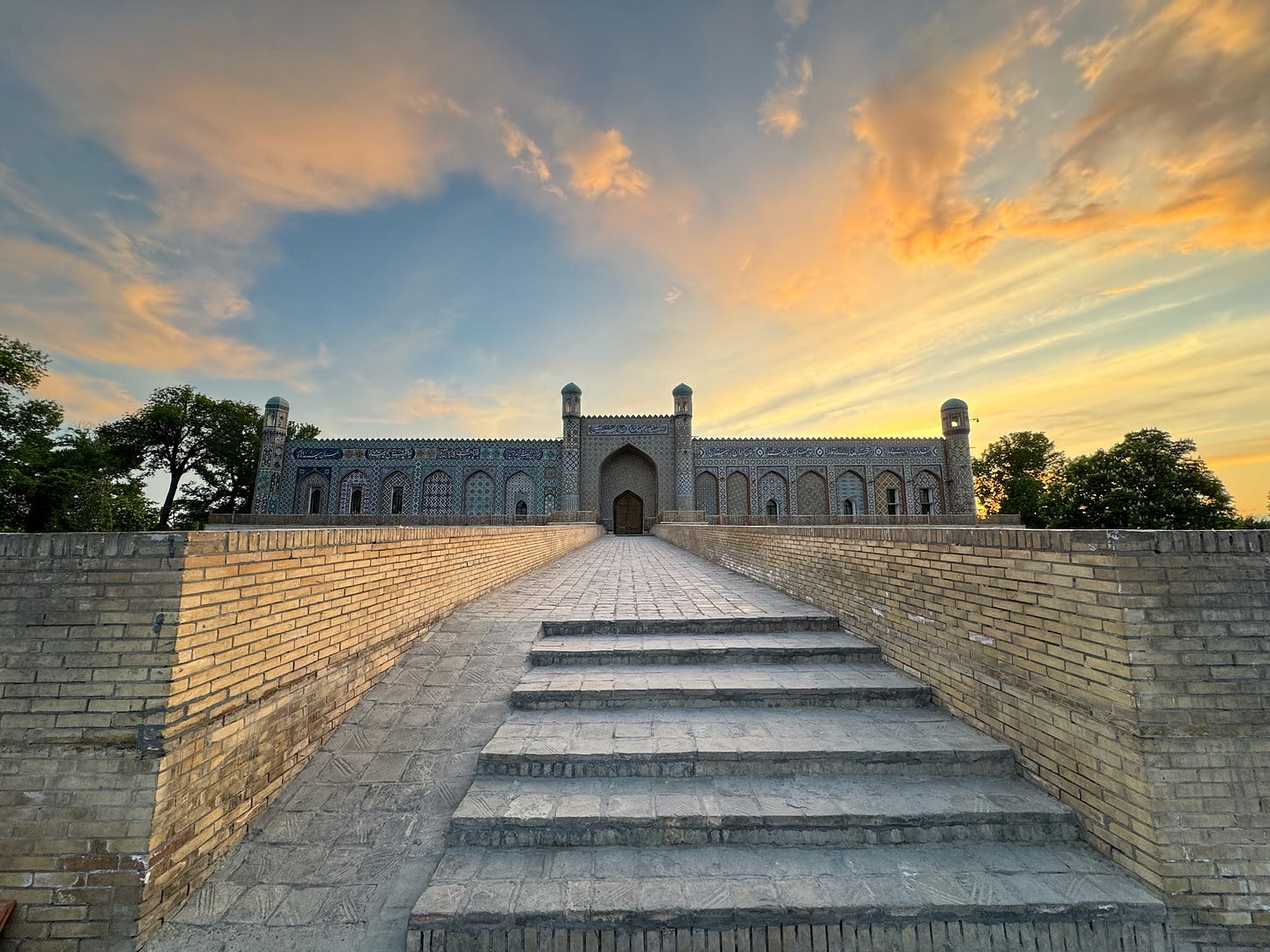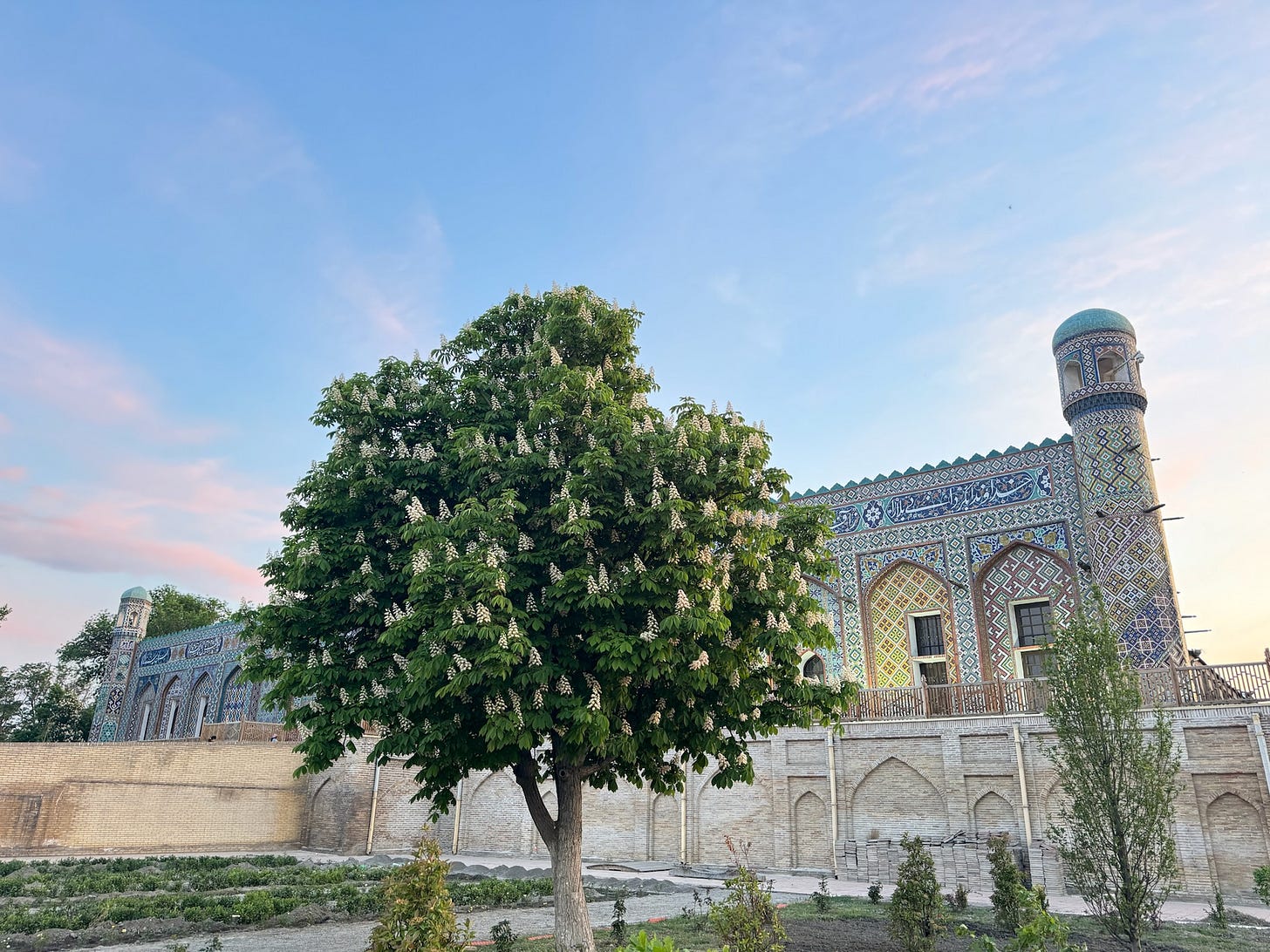I stayed for a night in the city of Kokand, deep in the Fergana Valley. Once a thriving hub of Silk Road commerce, it had long been a center for the trade of fine fabrics, textiles, spices, precious metals, and artisanal goods. For centuries, Kokand was peaceful, home to diverse communities and frequented by merchants from near and far. This cultural mix fostered tolerance and patience, while also cultivating a vibrant economy.
Yet there was something I was still unaware of—something that would have shattered my sense of accomplishment and my conviction that I was already well beyond the halfway mark. Earlier that day, after leaving Angren, where I had spent the previous night, I passed a road sign that, for the first time, pointed toward a city in China: Qashgar. Seeing it felt like an arrival of sorts. My destination was suddenly within reach—just one more country, Kyrgyzstan, before entering China. Any cyclist knows that the sight of the final stretch brings a renewed burst of energy. Now, of course, I know better. Another 5,000 kilometers still lay ahead of me. Here in Kokand, I was merely at the midpoint of my journey, yet it already felt deeply East.
That evening, just before sunset, I arrived at the Khudayar Khan Palace, a stunning piece of architecture—despite being reduced to just one-fifth of its original scale after the last ruler of the Kokand Khanate was overthrown, and power eventually transferred to the Russian Empire in the mid-19th century. Kokand’s fate was sealed as Russia expanded deeper into Central Asia, spurred by the pursuit of new wealth, including oil and cotton. The palace, surrounded by gardens of chestnut trees, immediately drew the eye with its balanced, symmetrical design.
As I approached, I was captivated by its dazzling façade, covered in vibrant majolica tiles. Though the museum inside had already closed for the day, the guard—perhaps moved by the sight of a cyclist from Holland—allowed me in for a few minutes. I wandered through the colonnade around the central courtyard, admiring its hand-painted ceilings and intricately carved wooden pillars.
The rise and fall of Kokand’s architectural splendor made me reflect on another plant that has profoundly shaped Asia’s history: cotton. Following tea and opium, the drive to control cotton production became yet another source of tension between East and West—one that continues to reverberate to this day.
This post contains a preview of a forthcoming book about Journey to the East, highlighting the perpetuating tensions and sometimes awkward dialogues between East and West as found on my quest for a New Silk on an Old Road.





Tea, opium & cotton: offer an appendex, as many pages as your book.